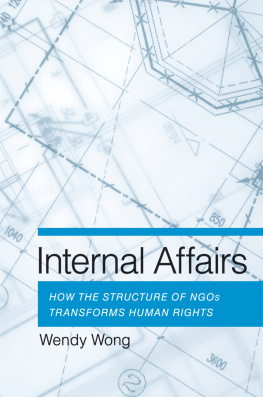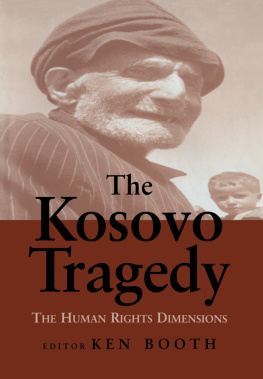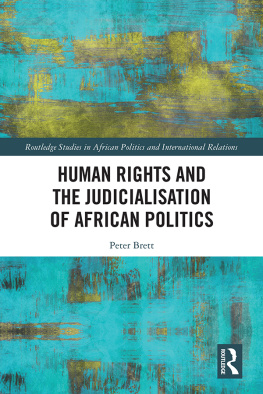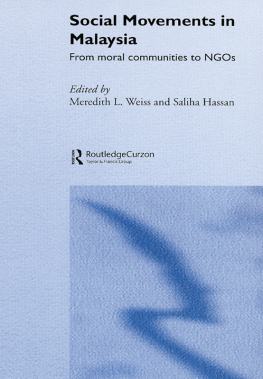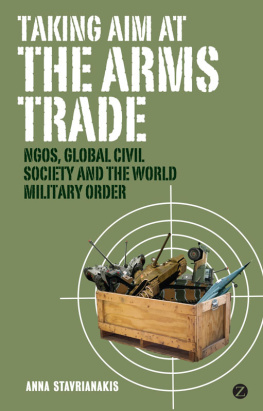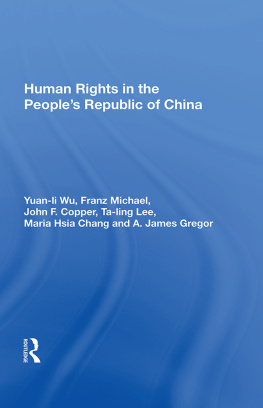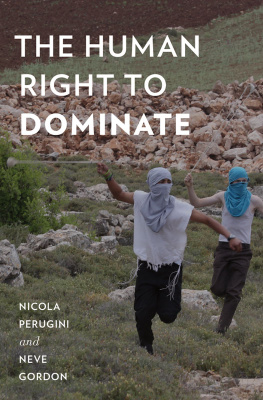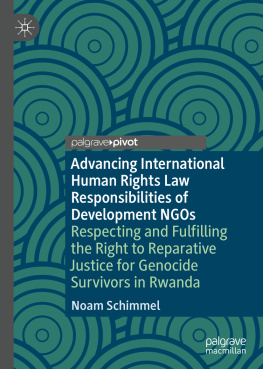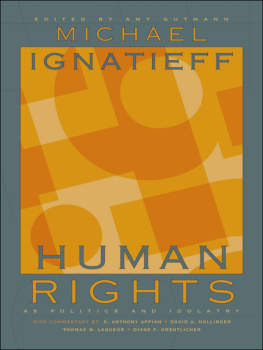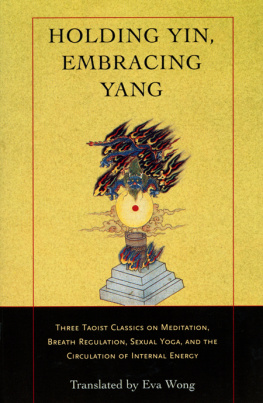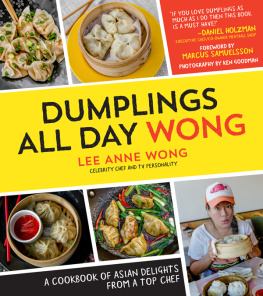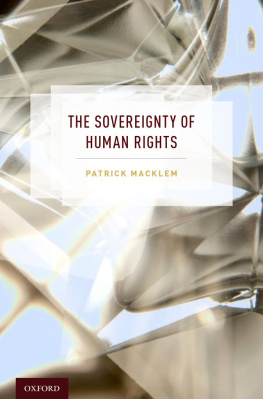Wendy H. Wong - Internal Affairs: How the Structure of NGOs Transforms Human Rights
Here you can read online Wendy H. Wong - Internal Affairs: How the Structure of NGOs Transforms Human Rights full text of the book (entire story) in english for free. Download pdf and epub, get meaning, cover and reviews about this ebook. year: 2012, publisher: Cornell University Press, genre: Politics. Description of the work, (preface) as well as reviews are available. Best literature library LitArk.com created for fans of good reading and offers a wide selection of genres:
Romance novel
Science fiction
Adventure
Detective
Science
History
Home and family
Prose
Art
Politics
Computer
Non-fiction
Religion
Business
Children
Humor
Choose a favorite category and find really read worthwhile books. Enjoy immersion in the world of imagination, feel the emotions of the characters or learn something new for yourself, make an fascinating discovery.
- Book:Internal Affairs: How the Structure of NGOs Transforms Human Rights
- Author:
- Publisher:Cornell University Press
- Genre:
- Year:2012
- Rating:4 / 5
- Favourites:Add to favourites
- Your mark:
- 80
- 1
- 2
- 3
- 4
- 5
Internal Affairs: How the Structure of NGOs Transforms Human Rights: summary, description and annotation
We offer to read an annotation, description, summary or preface (depends on what the author of the book "Internal Affairs: How the Structure of NGOs Transforms Human Rights" wrote himself). If you haven't found the necessary information about the book — write in the comments, we will try to find it.
Wendy H. Wong: author's other books
Who wrote Internal Affairs: How the Structure of NGOs Transforms Human Rights? Find out the surname, the name of the author of the book and a list of all author's works by series.
Internal Affairs: How the Structure of NGOs Transforms Human Rights — read online for free the complete book (whole text) full work
Below is the text of the book, divided by pages. System saving the place of the last page read, allows you to conveniently read the book "Internal Affairs: How the Structure of NGOs Transforms Human Rights" online for free, without having to search again every time where you left off. Put a bookmark, and you can go to the page where you finished reading at any time.
Font size:
Interval:
Bookmark:
| ACLU | American Civil Liberties Union |
| AI-Mexico | Amnesty InternationalMexico |
| AI | Amnesty International |
| AIUSA | Amnesty InternationalUSA |
| ANC | African National Congress |
| ARV | Antiretroviral drugs |
| ASI | Anti-Slavery International |
| CAT | Convention against Torture |
| Comecon | Council for Mutual and Economic Assistance |
| DNDi | Drugs for Neglected Diseases Initiative |
| ECHR | European Convention on Human Rights |
| ECOSOC | United Nations Economic and Social Council |
| FIDH | Fdration Internationale des Droits de Lhomme |
| HRW | Human Rights Watch |
| IANSA | International Action Network on Small Arms |
| ICBL | International Campaign to Ban Land mines |
| ICCPR | International Covenant for Civil and Political Rights |
| ICESCR | International Covenant for Economic, Social, and Cultural Rights |
| ICJ | International Commission of Jurists |
| ICM | International Council of Meetings |
Font size:
Interval:
Bookmark:
Similar books «Internal Affairs: How the Structure of NGOs Transforms Human Rights»
Look at similar books to Internal Affairs: How the Structure of NGOs Transforms Human Rights. We have selected literature similar in name and meaning in the hope of providing readers with more options to find new, interesting, not yet read works.
Discussion, reviews of the book Internal Affairs: How the Structure of NGOs Transforms Human Rights and just readers' own opinions. Leave your comments, write what you think about the work, its meaning or the main characters. Specify what exactly you liked and what you didn't like, and why you think so.

